3Ds Max is a very popular software, with a rich history that goes all the way back to 1996. This made developers enrich it with loads of plugins throughout the years, to make working with it much easier for designers. The main reason is the fact that Autodesk, its original developer, did not really make great progress with its updates lately.
You probably don’t often think about using 3Ds Max for VFX work rather than conventional 3D work. But today, we’ll show you that VFX work is indeed one of the many and versatile uses of 3Ds Max. We are going to talk about 12 of the best 3Ds Max VFX plugins and tools for effects and simulations.
12- PullDownit (Thinkinetic)
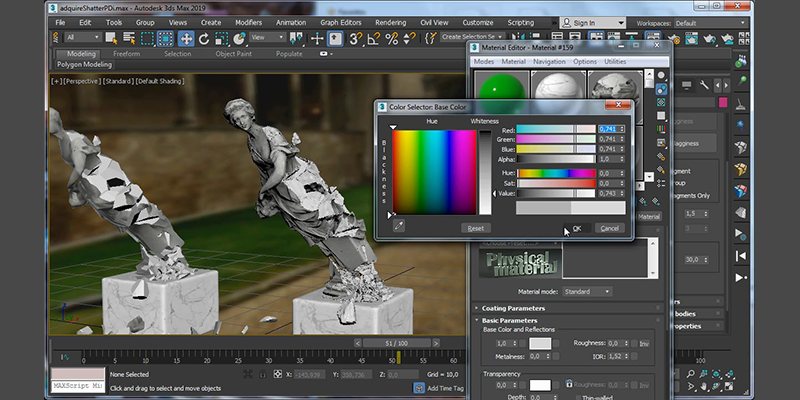
Pulldownit is a dynamics plugin intended for destruction effects as well as massive rigid body simulations. By using its technology digital artists are able to shatter objects in different styles and simulate easily the fracture of 3D models. It allows for computing thousands of objects in dynamics in a stable and realistic way.
This plugin has some interesting features like:
- Shatter It
This is a pre-cutting tool, it is able to generate jaggy fragments much more realistic than classic polygonal fragments. It is Voronoi-based because this scheme has shown to be the best mathematical pattern for brittle fracture. Its technology allows to pre-cut a 3D model in hundred of shards in seconds, in addition, the fragments generated plug easily in the Pulldownit solver to perform simulation in a fast and stable way.
- Built-in Dynamics & Fracture solver
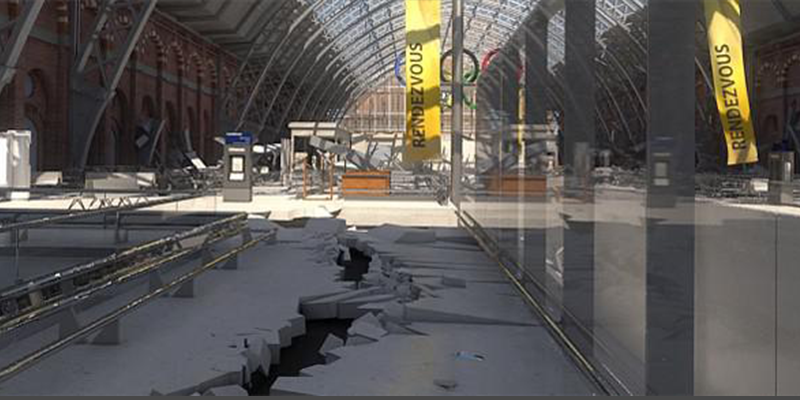
The technology of fracture inside PullDownit is great. It allows fracturing of any kind of brittle material like stone, glass, or stucco. By using it digital artists are able to simulate the collapse of structures or terrain cracking in minutes. Not least, its easy setup and powerful stress tools allow for control in the creation of cracks and drive the simulation to the desired end.
- Animator Friendly
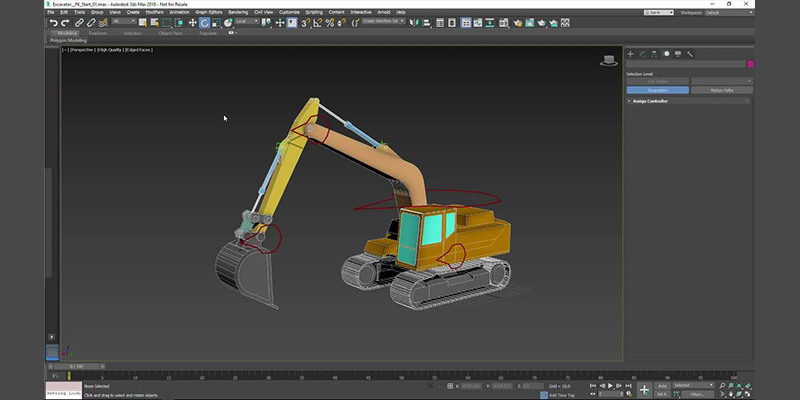
PullDownit catches the geometry from the viewports and computes the final result as animation keys, it allows to reset the simulation and start again as many times as needed also tweaking parameters and resume simulations at any frame, in addition, animated objects and characters are able to interact with the simulated ones.
11- Krakatoa(ThinkBox)
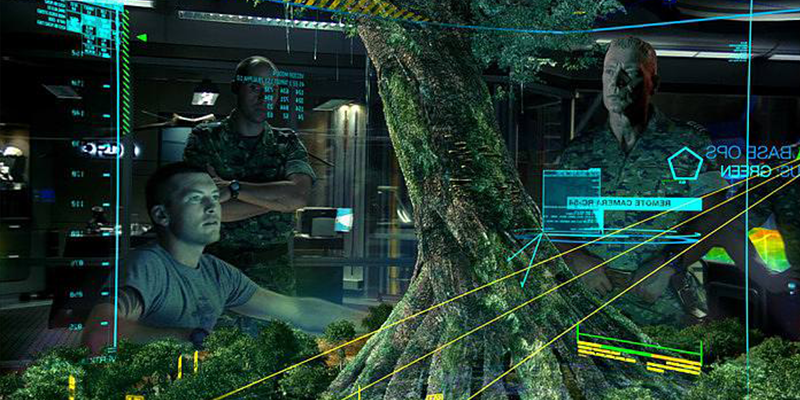
KRAKATOA™ is Thinkbox Software’s Volumetric Particle Rendering, Manipulation, and Management Toolkit.
KRAKATOA was specifically designed to process and render millions and even billions of particles and adapt its memory footprint to the requested rendering features. It provides a pipeline for acquiring, caching, transforming, modifying, shading, and rendering vast quantities of particles at unprecedented speed to represent natural phenomena like dust, smoke, silt, ocean surface foam, plasma, and even solid objects.
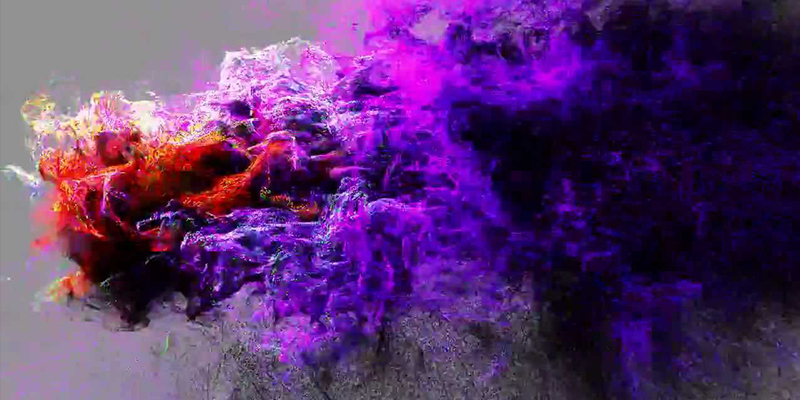
KRAKATOA is CPU-based, highly optimized for 64-bit computing, heavily multi-threaded, and can be used successfully on most hardware running Windows or Linux operating systems including laptops and render nodes without dedicated high-end graphics accelerators.
There are some features that made Krakatoa Special which are:
- KRAKATOA offers both Particle and Voxel rendering modes using the same source data.
- It supports volumetric and additive particle shading, texturing, high-quality particle self-shadowing, and shadow casting from and onto matte objects.
- Per-particle Scatter, Emission, Absorption, and Density data channels, as well as various Light Scattering models, allow deep levels of control over the final image.
- Motion Blur and Depth Of Field camera effects are naturally supported.
- KRAKATOA integrates with the native particle systems of 3ds Max and Maya and provides data exchange capabilities for sharing particles with other 3D and simulation applications
10- Rayfire
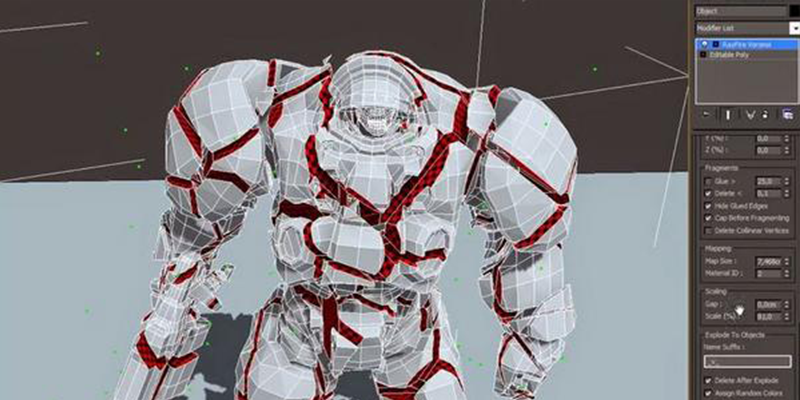
Rayfire is a great VFX plugin for 3Ds Max, it can fragment, destroy, demolish, break down, blow up, burst, detonate, explode, and more.
It is being used by some of the biggest names in the entertainment industry from film and games. It comes with tones of features we will try to mention some of them here.
- Bullet and Nvidia PhysX support via RayFire user interface allow You to create Rigid Body simulations, affect objects during simulation by Forces, Space Warps, and Mouse Cursor.
- Interactive Demolition System: Creates dynamic simulation and demolishes objects accordingly to their material and collision strength during the simulation. Each fragment can be demolished further with the proper amount of collision strength.

It also has interesting modifiers like:
- Shatter modifier: Tetrahedron based on damaging and fragmentation.
- Bricks modifier: Allows to quickly fragment geometry to Bricks or Stones.
- Cache object: Allows to cache geometry and animation in a single file to store it outside of the scene.
- Trace object: Image tracing to fragments.
- Clusters modifier: Group’s simple fragments into more complex clusters.
- Bomb helper: This allows you to create all kinds of explosions.
- Asperity modifier: Adds detalization to simple geometry and makes them much more realistic.
- Slice modifier: Advanced Slice modifier with all features You may need.
- Cracks modifier: Animated 3D Cracks inside the refractive object.
- Voxels modifier: Creates voxels using geometry volume.
9- Razor
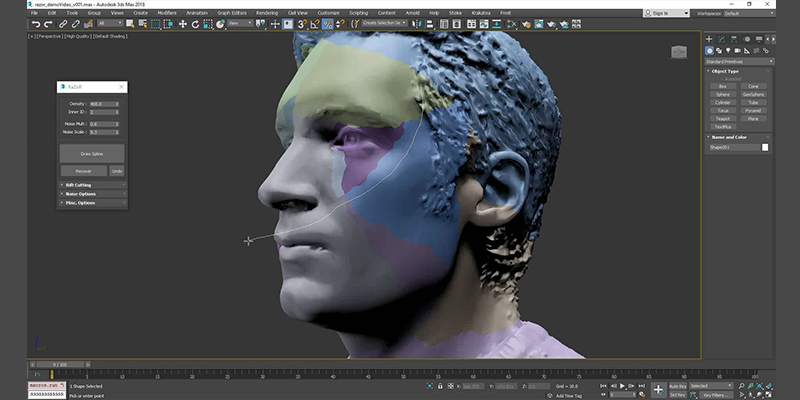
Razor is a tool built specifically around an artist’s needs in production. With the ability to fully restore objects, specific changes from the client can easily be addressed without spending hours re-cutting geometry.
Razor is a cutting tool designed by Paul Fuller. With a simple interface, Razor is easy to learn, easy to use, and allows the artist to spend time being creative rather than messing around with options.
Razor Features Include :
- Hand-drawn cuts, allowing for complete control over the shape of your destruction.
- Auto Cutting to break up objects quickly when specific control isn’t needed.
- A full recovery for all objects at any time. You can always go back and make adjustments to specific pieces while developing your simulation. You can even go all the way back to the original object if you want to.
- Hotkeys for Cutting, Auto Cutting, and Recovery functions allow for a smooth and efficient workflow.
- A custom Normal based Noise that helps avoid boolean errors and make the cleanest cuts possible.
- Rift cutting options.
- Layered Max Noises.
- Advanced error checks to make sure the cut geo is clean.
- Cutover multiple objects, maintaining all relationships and properties.
Use proxies to accelerate the speed of dynamics in the viewport.
8- Frost
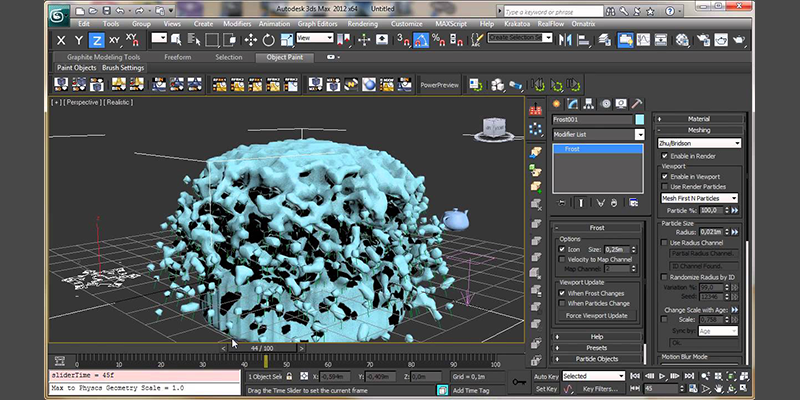
Frost allows you to build your mesh from multiple sources, it generates a single mesh from particles, vertex clouds, object positions, and point data files using various iso-surface and geometry cloning techniques.
Taking full advantage of multi-core processors, Frost is able to produce polygon meshes from millions of points in a matter of seconds without excessive memory usage.
Frost supports all Custom Geometry functionality including particle channel propagation, material and shape ID controls, animation timing offsets, and motion blur from particle velocity.
When combined with the particle generation and Magma data channel manipulation capabilities of Thinkbox’s Krakatoa MX, V-Ray’s Instancing becomes a more flexible, effective tool for Frost users.
Frost gains speed by stripping away much of the computational burden usually associated with data-heavy particle meshes and fluid simulations. Artists can work more dynamically and see their work come to life faster,”
7- Demolition Master

Demolition Master is a 3Ds Max VFX plugin based on Thinking Particles for making quick, and easy destruction. Demolition Master uses Thinking Particles, a dynamic solver, it is more solid and stable than PhysX, with concave and convex objects enabled, also you can use Bullet physics.
For Demolition Master you need 3ds max with Thinking Particles installed. FumeFx is also supported but not necessary.
Demolition master has a lot of features like:
- Interactive Dynamic Demolition System.
- Procedural bullet and Joint system.
- Concrete, wood, glass, and steel materials with specific parameters.
- Full destruction control, fragmentation objects pass different states with different frictions defined by the user.
- Instant debris creation for concrete, wood, steel, glass materials, and bullets.
- Instant interaction with FumeFx.
- The ability to Export geometry
- Bullet physics
6- Fastcutter

FastCutter is an artistic mesh-cutting tool for 3ds Max, developed in 2006 and 2007 to help the hand-cutting of thousands of pieces of geometry in the road destruction sequence for the movie “2012”. Since then it has been used in dozens of Hollywood films and other independent projects.
The beauty of FastCutter is its speed and artistic control – the cuts are applied exactly as you draw them and there is an “auto-cut” mode to quickly apply the cut after drawing.
It works by hand-drawing “cutting splines” that are extruded and applying noise modifiers, and includes various other options and an Undo function. You can also pick specific objects as the Cutter or Source and apply the cuts.
It can cut multiple objects at once and the Pro version includes the option to update the noise parameter per cut-object for a nice staggered offset cut appearance.
FastCutter works especially well to prepare geometry for Thinking Particles destruction shots, and can also be used for creative mesh modeling.
5- RealFlow (NextLimit)

RealFlow is a liquid simulator that works with 3Ds Max, which gives you incredible abilities. Sand can be washed by water, Cream floats on top of Coffee, and a lot more things, your creativity is the limit.
- The entire range of fluids and materials is GPU-accelerated.
- It has An artist-friendly interface, fast and effective filters, and advanced meshing technology that lets you create and fine-tune millions of polygons in seconds.
- RealFlow stores data like age or velocity for a perfect render experience. And weight maps allow for the creation of colorful mixing effects.
- You can turn objects straightaway into obstacles, containers, and emitters, render complex meshes or create particles from shapes.
- It lets animated bodies collide with fluids to create impressive splashes and control the interaction through a wide range of physical properties such as friction, stickiness, or bounciness.

- Forces are a key element in RealFlow and they make a lot of difference when applied in simulations. Typical examples are gravity, attraction, or wind.
- RealFlow has a lot of creative tools like crown splashes, entwined spline emitters, swirling splashes, and thin sheets of fluids moving in slow-motion.
- Initial states can be created from arbitrary simulation frames and used as a starting point for a new simulation pass.
- You can use the object texture to emit particles, customize properties like its friction or generate new textures where particles leave wet marks on an object’s surface.
4- FumeFX

FumeFx is a powerful fluid dynamics plugin for 3ds Max, designed for simulation and rendering of realistic fire, smoke, explosions, and other gaseous phenomena. It has the ability to capture the subtlety and complexity of fluid gas behavior. It is favored among visual effects artists, game developers, visualization professionals, and anybody else who wants to generate amazing effects.
FumeFX has a lot of feature like:
- A unique set of tools that will free the creative mind and minimize tedious tasks even further than before.
- A wide range of irregular objects can be used for simulation without the fear of solver instabilities.
- GPU accelerated 3ds Max viewport for faster simulations, the GPU accelerated viewport produces render-comparable images to give instant feedback on the appearance and behavior of the simulation.
- FumeFX user interface combines all the major fluid simulation components making the simulation setup easy and efficient.
- It allows the user to change parameters during the simulation with instant feedback.
- The FumeFX interface integrates simulation, rendering, presets and source parameters in one place. It provides quick and easy navigation through simulation caches and offers intuitive control of simulation parameters.
- The FumeFX simulation core has been constantly improved and refined to deliver high level of realism with minimal simulation times.
3- Pheonix FD

Phoenix FD is an all-in-one solution for fluid dynamics. It can Simulate fire, smoke, liquids, ocean waves, splashes, spray, mist, and more.
It was built for 3D artists who want to create dynamic FX using quick presets, fast setup, and intuitive controls.
Phoenix FD Preview and render interactively in the viewport to Adjust simulations on the fly. It Creates all types of physically-based fluid effects with fast, flexible controls for rendering, retiming and refining simulations.
It is Integrated seamlessly into 3ds Max and optimized to render with V-Ray. Pheonix FD is compatible with top industry tools such as OpenVDB, Alembic, Krakatoa and Thinking Particles.
With Phoenix FD you can create realistic liquid simulations with splashes and foam directly in 3ds Max. And Create any type of fire and smoke effects with Phoenix FD’s powerful, adaptive-grid dynamics engine.
It is good for generating small wisps of smoke and steam and Rendering particles as bubbles, drops, points, or fog.
Phoenix FD Simulate highly-realistic and complex vorticity effects with full control over large-scale vortex strength and ultra-fine details and increase resolution without changing simulation shape or behavior. Also, you can Import & export mesh objects and particles to OpenVDB, Alembic, Krakatoa, XMesh, and V-Ray proxy files.
2- TYFlow
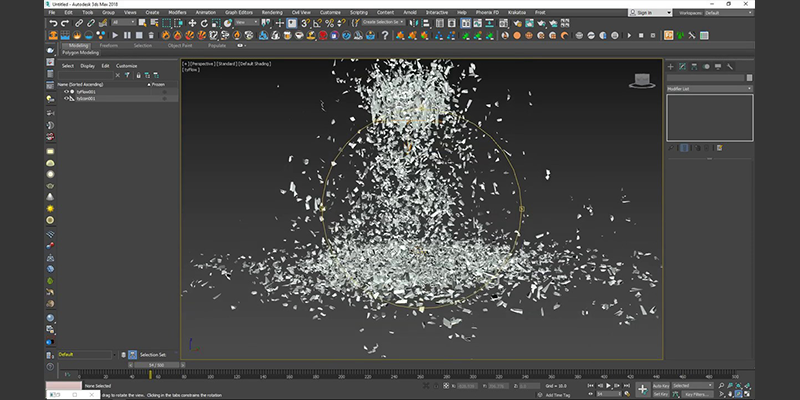
TyFlow is basically a complete rewrite of Particle Flow, which is developed by Tyson Ibele. It is similar to Particle Flow but much more powerful.
TyFlow is a particle simulator that takes simple concepts like position, rotation, scale, and velocity and applies them to huge numbers of individual points in 3D space. When simple rules are applied to a lot of things like that at once, the result is an emergence of complex patterns and behaviors which can then be used to create all kinds of different visual effects.
TyFlow itself is not a stand-alone application – it is a plugin that works inside Autodesk’s 3ds Max.
TyFlow is a plugin that was created by Tyson who works at a company called MAKE. He was frustrated by particle flow due to slow performance, bugs, and lack of updates which left particle flow behind especially. The progress we have seen with particle simulators in the last few years.
Particle flow was cutting edge at one point but it couldn’t keep up so Tyson took matters into his own hands and rewrote the whole thing in his free time to create Tyflow.
Tyflow has a lot of features we will try to mention some of them here:
- It has tons of new operators, featuring things like a granular solver, cloth, rope, proper path follow, DLA growth, constraints to name a few, and every operator is fully multithreaded.
- All of PFlow’s operations that made it totally unusable for productions have been properly accelerated.
- Spline operator and a super-fast spline meshing modifier for converting particle trajectories/neighbors/constraints/
and other stuff into spline meshes. - Fast auto-caching, similar to how Houdini caches things on the fly.
Simulation retiming, Up-to-date PhysX support, and More.
1- Thinking Particles
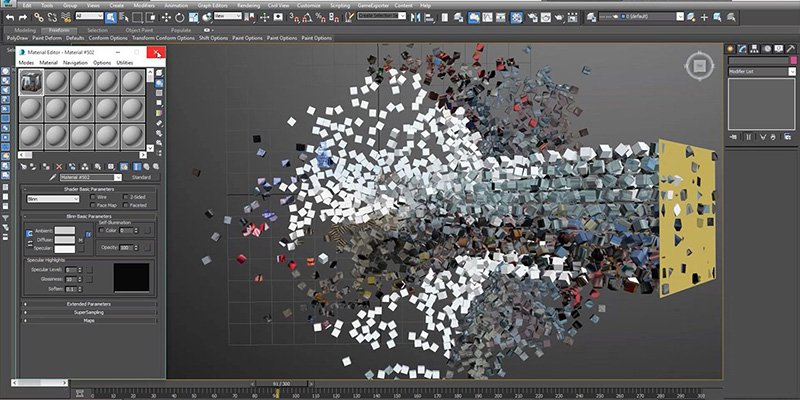
Countless blockbuster movies and products depend on Thinking Particles‘ limitless ability to recreate advanced physics-based particle effects fully procedural and rule-based.
Some of its features are :
- Advanced Multi-physics simulations.
- Optimized fluid simulation and Optimized rigid body interactions that resemble real-world physics behavior.
- Increased simulation accuracy without being penalized in render time.
- Greater Procedural Volumetric Controls and Shape Operators. and enhances SPH Solver offers great stability and more.
Some of the new features in the New release:
- Enhanced Fluids
- Surface force
- Water level
- Open VDB shape
- Shape deform
- Shape cutter
- Volume diffusion
- Multi-physics
Finally, these were the best 3Ds Max VFX plugins that you can find out there and that will make your work a lot easier with less time.































